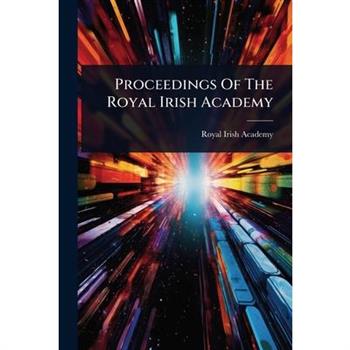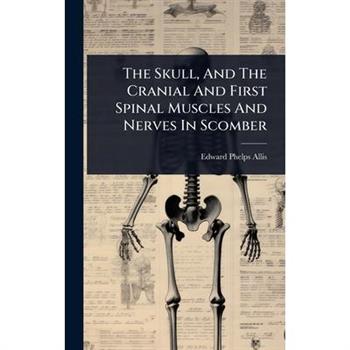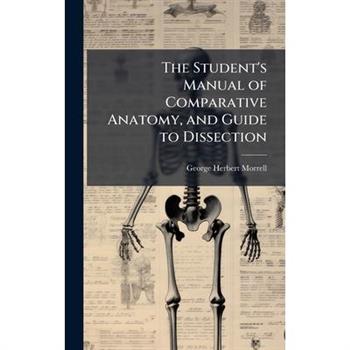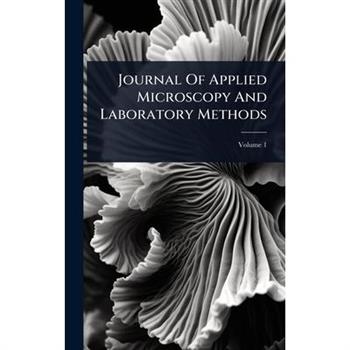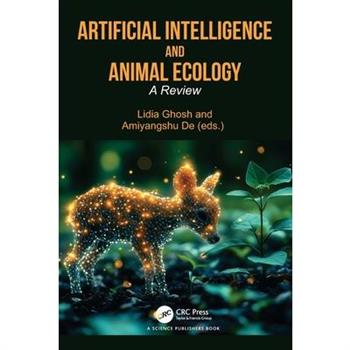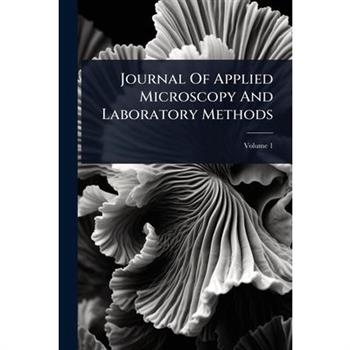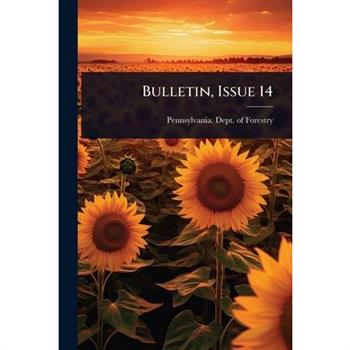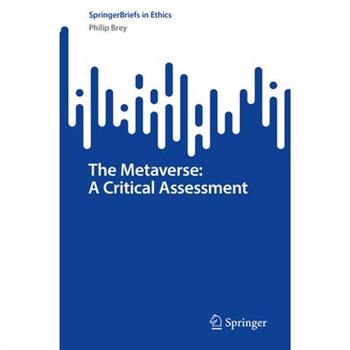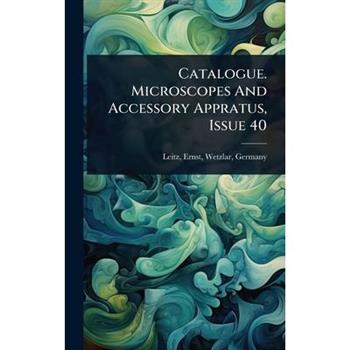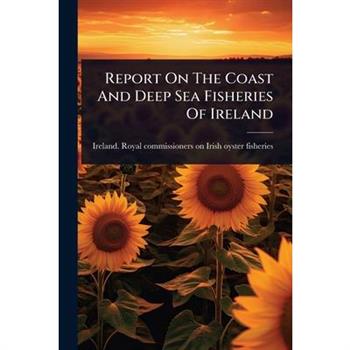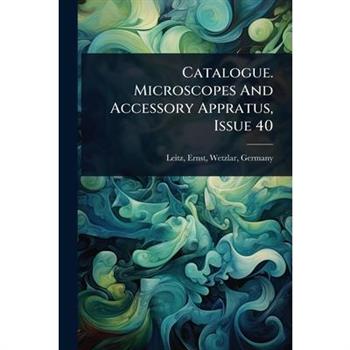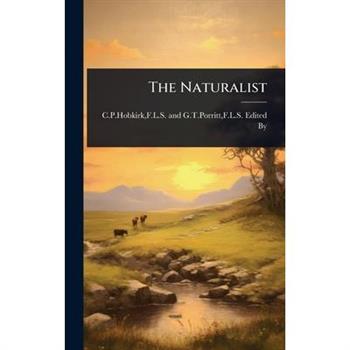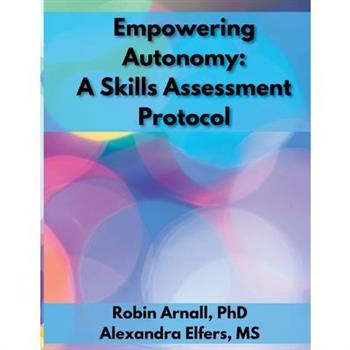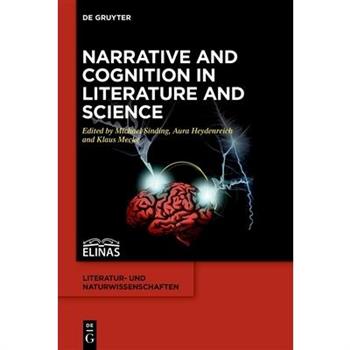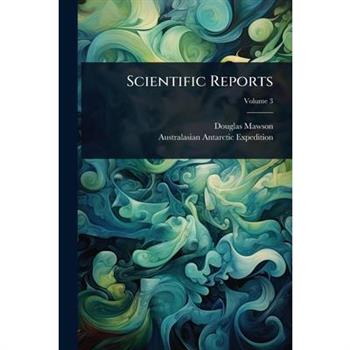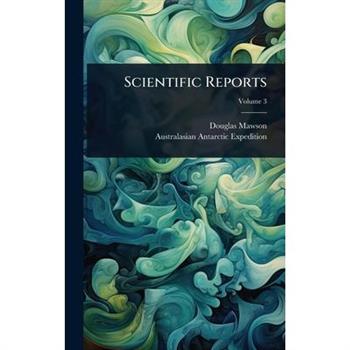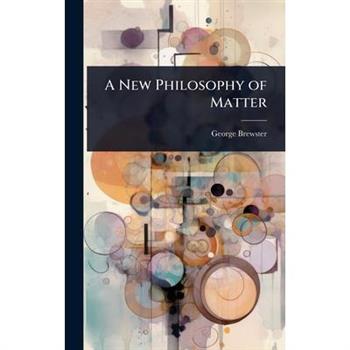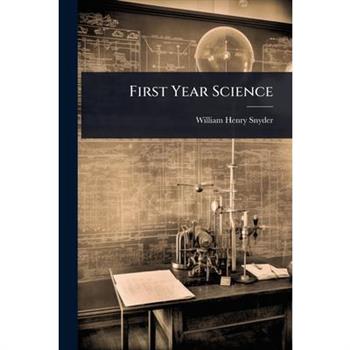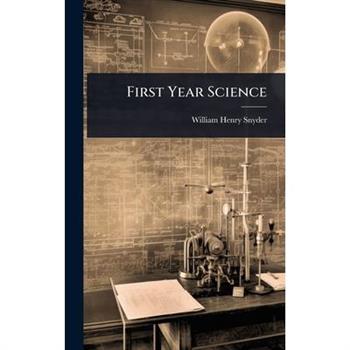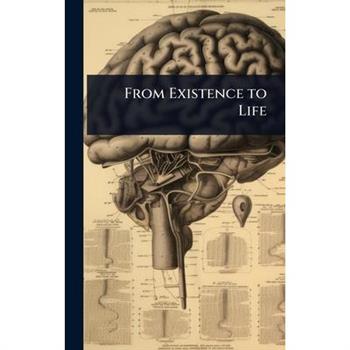Proceedings Of The Royal Irish Academy
This volume comprises the scientific proceedings of the Royal Irish Academy, a historical record of scholarly activity in Ireland. Detailing various scientific investigations and findings, 璽€œProceedings Of The Royal Irish Academy: Science璽€ offers insights into the academic landscape of its time. A valuable resource for researchers and historians of science, it provides a glimpse into the development of scientific thought and practice within an Irish context. The collection showcases the breadth of scientific inquiry pursued by members of the Royal Irish Academy, making it a significant contribution to the history of science.This work has been selected by scholars as being culturally important, and is part of the knowledge base of civilization as we know it. This work was reproduced from the original artifact, and remains as true to the original work as possible. Therefore, you will see the original copyright references, library stamps (as most of these works have been housed in our most important libraries around the world), and other notations in the work.This work is in the public domain in the United States of America, and possibly other nations. Within the United States, you may freely copy and distribute this work, as no entity (individual or corporate) has a copyright on the body of the work.As a reproduction of a historical artifact, this work may contain missing or blurred pages, poor pictures, errant marks, etc. Scholars believe, and we concur, that this work is important enough to be preserved, reproduced, and made generally available to the public. We appreciate your support of the preservation process, and thank you for being an important part of keeping this knowledge alive and relevant.
The Skull, And The Cranial And First Spinal Muscles And Nerves In Scomber
"The Skull, And The Cranial And First Spinal Muscles And Nerves In Scomber" by Edward Phelps Allis presents a detailed anatomical study of the skull, cranial muscles, and spinal structures of the Scomber fish species. This meticulously researched work delves into the intricate biological makeup of Scomber, offering valuable insights for zoologists, anatomists, and marine biology enthusiasts. The book provides an in-depth exploration of the muscular and nervous systems connected to the Scomber skull, serving as a significant resource for understanding comparative anatomy and neurological structures in fish.Allis璽€(TM)s comprehensive analysis renders this book essential for researchers and students seeking a deeper understanding of fish anatomy. This study remains a relevant resource for anyone interested in the specific anatomical characteristics of Scomber and broader studies in zoological anatomy.This work has been selected by scholars as being culturally important, and is part of the knowledge base of civilization as we know it. This work was reproduced from the original artifact, and remains as true to the original work as possible. Therefore, you will see the original copyright references, library stamps (as most of these works have been housed in our most important libraries around the world), and other notations in the work.This work is in the public domain in the United States of America, and possibly other nations. Within the United States, you may freely copy and distribute this work, as no entity (individual or corporate) has a copyright on the body of the work.As a reproduction of a historical artifact, this work may contain missing or blurred pages, poor pictures, errant marks, etc. Scholars believe, and we concur, that this work is important enough to be preserved, reproduced, and made generally available to the public. We appreciate your support of the preservation process, and thank you for being an important part of keeping this knowledge alive and relevant.
The Student’s Manual of Comparative Anatomy, and Guide to Dissection
"The Student's Manual of Comparative Anatomy, and Guide to Dissection," by George Herbert Morrell, is a comprehensive textbook designed for students in schools and universities. Published in 1872, this manual offers a detailed exploration of comparative anatomy, providing junior students with a structured approach to understanding anatomical structures through dissection.The book serves as both a theoretical resource and a practical guide, facilitating a deeper understanding of the subject matter. Its enduring value lies in its systematic approach to anatomical study, making it a valuable resource for those interested in the history of medical education and the development of anatomical science.This work has been selected by scholars as being culturally important, and is part of the knowledge base of civilization as we know it. This work was reproduced from the original artifact, and remains as true to the original work as possible. Therefore, you will see the original copyright references, library stamps (as most of these works have been housed in our most important libraries around the world), and other notations in the work.This work is in the public domain in the United States of America, and possibly other nations. Within the United States, you may freely copy and distribute this work, as no entity (individual or corporate) has a copyright on the body of the work.As a reproduction of a historical artifact, this work may contain missing or blurred pages, poor pictures, errant marks, etc. Scholars believe, and we concur, that this work is important enough to be preserved, reproduced, and made generally available to the public. We appreciate your support of the preservation process, and thank you for being an important part of keeping this knowledge alive and relevant.
Journal Of Applied Microscopy And Laboratory Methods
"Journal Of Applied Microscopy And Laboratory Methods, Volume 1" offers a detailed exploration of techniques and methodologies essential to scientific investigation. This volume presents a compilation of articles that delve into the intricacies of microscopy and various laboratory practices. It serves as a valuable resource for researchers, students, and professionals seeking to enhance their understanding and skills in applied science. The journal emphasizes practical applications, making it an indispensable guide for those engaged in hands-on laboratory work and advanced scientific studies. A timeless resource for anyone involved in the world of microscopy and laboratory science.This work has been selected by scholars as being culturally important, and is part of the knowledge base of civilization as we know it. This work was reproduced from the original artifact, and remains as true to the original work as possible. Therefore, you will see the original copyright references, library stamps (as most of these works have been housed in our most important libraries around the world), and other notations in the work.This work is in the public domain in the United States of America, and possibly other nations. Within the United States, you may freely copy and distribute this work, as no entity (individual or corporate) has a copyright on the body of the work.As a reproduction of a historical artifact, this work may contain missing or blurred pages, poor pictures, errant marks, etc. Scholars believe, and we concur, that this work is important enough to be preserved, reproduced, and made generally available to the public. We appreciate your support of the preservation process, and thank you for being an important part of keeping this knowledge alive and relevant.
Bulletin, Issue 14
Bulletin, Issue 14, authored by the Pennsylvania Department of Forestry, offers insights into the management and conservation of Pennsylvania's natural resources. This bulletin likely contains articles and information pertinent to forestry practices, environmental conservation efforts, and updates relevant to those working in or studying related fields. It serves as a valuable resource for understanding the policies, research, and practical applications concerning the stewardship of Pennsylvania's forests and natural environment.This work has been selected by scholars as being culturally important, and is part of the knowledge base of civilization as we know it. This work was reproduced from the original artifact, and remains as true to the original work as possible. Therefore, you will see the original copyright references, library stamps (as most of these works have been housed in our most important libraries around the world), and other notations in the work.This work is in the public domain in the United States of America, and possibly other nations. Within the United States, you may freely copy and distribute this work, as no entity (individual or corporate) has a copyright on the body of the work.As a reproduction of a historical artifact, this work may contain missing or blurred pages, poor pictures, errant marks, etc. Scholars believe, and we concur, that this work is important enough to be preserved, reproduced, and made generally available to the public. We appreciate your support of the preservation process, and thank you for being an important part of keeping this knowledge alive and relevant.
Common Objects of the Microscope
Common Objects of the Microscope, written by John George Wood and Edward Collins Bousfield, serves as a comprehensive guide to the world of microscopy, tailored for both amateur enthusiasts and seasoned scientists. Originally published around 1900, this book delves into the intricate details of using and understanding the microscope, offering insights into the preparation and examination of various specimens. The book meticulously covers a range of subjects suitable for microscopic study, from botanical structures and animal tissues to minerals and manufactured objects. With detailed illustrations and clear explanations, readers are guided through the techniques required to reveal the hidden wonders of the microscopic world. This edition preserves the original text and illustrations, ensuring that readers can appreciate the historical context and scientific curiosity of the era.This work has been selected by scholars as being culturally important, and is part of the knowledge base of civilization as we know it. This work was reproduced from the original artifact, and remains as true to the original work as possible. Therefore, you will see the original copyright references, library stamps (as most of these works have been housed in our most important libraries around the world), and other notations in the work.This work is in the public domain in the United States of America, and possibly other nations. Within the United States, you may freely copy and distribute this work, as no entity (individual or corporate) has a copyright on the body of the work.As a reproduction of a historical artifact, this work may contain missing or blurred pages, poor pictures, errant marks, etc. Scholars believe, and we concur, that this work is important enough to be preserved, reproduced, and made generally available to the public. We appreciate your support of the preservation process, and thank you for being an important part of keeping this knowledge alive and relevant.
Common Objects of the Microscope
Common Objects of the Microscope, written by John George Wood and Edward Collins Bousfield, serves as a comprehensive guide to the world of microscopy, tailored for both amateur enthusiasts and seasoned scientists. Originally published around 1900, this book delves into the intricate details of using and understanding the microscope, offering insights into the preparation and examination of various specimens. The book meticulously covers a range of subjects suitable for microscopic study, from botanical structures and animal tissues to minerals and manufactured objects. With detailed illustrations and clear explanations, readers are guided through the techniques required to reveal the hidden wonders of the microscopic world. This edition preserves the original text and illustrations, ensuring that readers can appreciate the historical context and scientific curiosity of the era.This work has been selected by scholars as being culturally important, and is part of the knowledge base of civilization as we know it. This work was reproduced from the original artifact, and remains as true to the original work as possible. Therefore, you will see the original copyright references, library stamps (as most of these works have been housed in our most important libraries around the world), and other notations in the work.This work is in the public domain in the United States of America, and possibly other nations. Within the United States, you may freely copy and distribute this work, as no entity (individual or corporate) has a copyright on the body of the work.As a reproduction of a historical artifact, this work may contain missing or blurred pages, poor pictures, errant marks, etc. Scholars believe, and we concur, that this work is important enough to be preserved, reproduced, and made generally available to the public. We appreciate your support of the preservation process, and thank you for being an important part of keeping this knowledge alive and relevant.
Brain Networks in Neuroscience
This book is an in-depth exploration of brain networks, providing a comprehensive understanding of their structures, functions, and implications for personalization through artificial intelligence. It offers the seamless integration of neuroscience principles with artificial intelligence applications.
Artificial Intelligence and Animal Ecology
The volume explores AI's transformative role in addressing ecological challenges and enhancing our understanding of the natural world. It highlights how species' ecological behavior have enriched AI's adaptive capabilities, aiding in the analysis of habitat, navigation, and communication.
Catalogue Of Specimens Of Indian Forest Produce For The Paris Exhibition Of 1878
This is a catalogue of Indian forest products prepared for the Paris Exhibition of 1878. It provides a detailed listing of various specimens of Indian forest produce, likely encompassing timber, oils, resins, dyes, fibers, and other materials derived from India's forests. Such catalogues were important for showcasing the economic and industrial potential of India璽€(TM)s natural resources to an international audience. The catalogue would have served as a means to promote trade, foster scientific exchange, and highlight the diverse range of forest products available from India. The meticulous categorization and description of each specimen offers valuable insights into the historical utilization and economic significance of Indian forests. It serves as a valuable reference for researchers studying economic botany, forestry, and the history of natural resource management in India.This work has been selected by scholars as being culturally important, and is part of the knowledge base of civilization as we know it. This work was reproduced from the original artifact, and remains as true to the original work as possible. Therefore, you will see the original copyright references, library stamps (as most of these works have been housed in our most important libraries around the world), and other notations in the work.This work is in the public domain in the United States of America, and possibly other nations. Within the United States, you may freely copy and distribute this work, as no entity (individual or corporate) has a copyright on the body of the work.As a reproduction of a historical artifact, this work may contain missing or blurred pages, poor pictures, errant marks, etc. Scholars believe, and we concur, that this work is important enough to be preserved, reproduced, and made generally available to the public. We appreciate your support of the preservation process, and thank you for being an important part of keeping this knowledge alive and relevant.
Journal Of Applied Microscopy And Laboratory Methods
"Journal Of Applied Microscopy And Laboratory Methods, Volume 1" offers a detailed exploration of techniques and methodologies essential to scientific investigation. This volume presents a compilation of articles that delve into the intricacies of microscopy and various laboratory practices. It serves as a valuable resource for researchers, students, and professionals seeking to enhance their understanding and skills in applied science. The journal emphasizes practical applications, making it an indispensable guide for those engaged in hands-on laboratory work and advanced scientific studies. A timeless resource for anyone involved in the world of microscopy and laboratory science.This work has been selected by scholars as being culturally important, and is part of the knowledge base of civilization as we know it. This work was reproduced from the original artifact, and remains as true to the original work as possible. Therefore, you will see the original copyright references, library stamps (as most of these works have been housed in our most important libraries around the world), and other notations in the work.This work is in the public domain in the United States of America, and possibly other nations. Within the United States, you may freely copy and distribute this work, as no entity (individual or corporate) has a copyright on the body of the work.As a reproduction of a historical artifact, this work may contain missing or blurred pages, poor pictures, errant marks, etc. Scholars believe, and we concur, that this work is important enough to be preserved, reproduced, and made generally available to the public. We appreciate your support of the preservation process, and thank you for being an important part of keeping this knowledge alive and relevant.
Process Realism in Physics
Science should tell us what the world is like. However, realist interpretations of physics face many problems, chief among them the pessimistic meta induction. This book seeks to develop a realist position based on process ontology that avoids the traditional problems of realism. Primarily, the core claim is that in order for a scientific model to be minimally empirically adequate, that model must describe real experimental processes and dynamics. Any additional inferences from processes to things, substances or objects are not warranted, and so these inferences are shown to represent the locus of the problems of realism. The book then examines the history of physics to show that the progress of physical research is one of successive eliminations of thing interpretations of models in favor of more explanatory and experimentally verified process interpretations. This culminates in collections of models that cannot coherently allow for thing interpretations, but still successfully describe processes.
Degree Of Resemblance Of Parents And Offspring With Respect To Birth As Twins For Registered Shropshire Sheep
This scholarly work, "Degree Of Resemblance Of Parents And Offspring With Respect To Birth As Twins For Registered Shropshire Sheep," delves into the genetic factors influencing twin births in Shropshire sheep. Authored by Henry Lewis Rietz and Elmer Roberts, the study examines the degree to which the propensity for twin births is inherited from parents to offspring. The book presents detailed research and analysis, making it a valuable resource for researchers, students, and breeders interested in animal genetics and improving breeding practices. It offers insights into the complex interplay of heredity and environmental factors in animal reproduction. It would be useful for those studying agriculture, animal science, and genetics.This work has been selected by scholars as being culturally important, and is part of the knowledge base of civilization as we know it. This work was reproduced from the original artifact, and remains as true to the original work as possible. Therefore, you will see the original copyright references, library stamps (as most of these works have been housed in our most important libraries around the world), and other notations in the work.This work is in the public domain in the United States of America, and possibly other nations. Within the United States, you may freely copy and distribute this work, as no entity (individual or corporate) has a copyright on the body of the work.As a reproduction of a historical artifact, this work may contain missing or blurred pages, poor pictures, errant marks, etc. Scholars believe, and we concur, that this work is important enough to be preserved, reproduced, and made generally available to the public. We appreciate your support of the preservation process, and thank you for being an important part of keeping this knowledge alive and relevant.
Bulletin, Issue 14
Bulletin, Issue 14, authored by the Pennsylvania Department of Forestry, offers insights into the management and conservation of Pennsylvania's natural resources. This bulletin likely contains articles and information pertinent to forestry practices, environmental conservation efforts, and updates relevant to those working in or studying related fields. It serves as a valuable resource for understanding the policies, research, and practical applications concerning the stewardship of Pennsylvania's forests and natural environment.This work has been selected by scholars as being culturally important, and is part of the knowledge base of civilization as we know it. This work was reproduced from the original artifact, and remains as true to the original work as possible. Therefore, you will see the original copyright references, library stamps (as most of these works have been housed in our most important libraries around the world), and other notations in the work.This work is in the public domain in the United States of America, and possibly other nations. Within the United States, you may freely copy and distribute this work, as no entity (individual or corporate) has a copyright on the body of the work.As a reproduction of a historical artifact, this work may contain missing or blurred pages, poor pictures, errant marks, etc. Scholars believe, and we concur, that this work is important enough to be preserved, reproduced, and made generally available to the public. We appreciate your support of the preservation process, and thank you for being an important part of keeping this knowledge alive and relevant.
Catalogue Of Specimens Of Indian Forest Produce For The Paris Exhibition Of 1878
This is a catalogue of Indian forest products prepared for the Paris Exhibition of 1878. It provides a detailed listing of various specimens of Indian forest produce, likely encompassing timber, oils, resins, dyes, fibers, and other materials derived from India's forests. Such catalogues were important for showcasing the economic and industrial potential of India璽€(TM)s natural resources to an international audience. The catalogue would have served as a means to promote trade, foster scientific exchange, and highlight the diverse range of forest products available from India. The meticulous categorization and description of each specimen offers valuable insights into the historical utilization and economic significance of Indian forests. It serves as a valuable reference for researchers studying economic botany, forestry, and the history of natural resource management in India.This work has been selected by scholars as being culturally important, and is part of the knowledge base of civilization as we know it. This work was reproduced from the original artifact, and remains as true to the original work as possible. Therefore, you will see the original copyright references, library stamps (as most of these works have been housed in our most important libraries around the world), and other notations in the work.This work is in the public domain in the United States of America, and possibly other nations. Within the United States, you may freely copy and distribute this work, as no entity (individual or corporate) has a copyright on the body of the work.As a reproduction of a historical artifact, this work may contain missing or blurred pages, poor pictures, errant marks, etc. Scholars believe, and we concur, that this work is important enough to be preserved, reproduced, and made generally available to the public. We appreciate your support of the preservation process, and thank you for being an important part of keeping this knowledge alive and relevant.
The Federal Ocean Program
The Federal Ocean Program: The Annual Report of The President to The Congress on The Nation's Efforts to Comprehend, Conserve, and Use The Sea, Volume 1975 presents a comprehensive overview of the United States' ocean-related activities. This historical document details the federal government璽€(TM)s initiatives to understand, protect, and utilize marine resources. It offers valuable insights into the environmental policies and scientific research of the era, providing a snapshot of the nation's commitment to ocean conservation and exploration during the early 1970s. This report is an essential resource for researchers, policymakers, and anyone interested in the history of environmental science and marine resource management. It sheds light on the evolving relationship between humanity and the ocean.This work has been selected by scholars as being culturally important, and is part of the knowledge base of civilization as we know it. This work was reproduced from the original artifact, and remains as true to the original work as possible. Therefore, you will see the original copyright references, library stamps (as most of these works have been housed in our most important libraries around the world), and other notations in the work.This work is in the public domain in the United States of America, and possibly other nations. Within the United States, you may freely copy and distribute this work, as no entity (individual or corporate) has a copyright on the body of the work.As a reproduction of a historical artifact, this work may contain missing or blurred pages, poor pictures, errant marks, etc. Scholars believe, and we concur, that this work is important enough to be preserved, reproduced, and made generally available to the public. We appreciate your support of the preservation process, and thank you for being an important part of keeping this knowledge alive and relevant.
Explorations and Field-work of the Smithsonian Institution in .. Volume 1917-20
Dive into the rich history of scientific exploration with "Explorations and Field-work of the Smithsonian Institution in .. Volume 1917-20." This meticulously compiled volume offers a fascinating glimpse into the research endeavors undertaken by the Smithsonian Institution during the early 20th century.Detailing a wide array of expeditions and fieldwork, this book showcases the institution's commitment to expanding our understanding of the natural world. From geological surveys to anthropological studies, each chapter provides valuable insights and data collected by dedicated researchers and scientists. This book is an essential resource for historians, scientists, and anyone with an interest in the development of scientific knowledge and the legacy of the Smithsonian Institution.This work has been selected by scholars as being culturally important, and is part of the knowledge base of civilization as we know it. This work was reproduced from the original artifact, and remains as true to the original work as possible. Therefore, you will see the original copyright references, library stamps (as most of these works have been housed in our most important libraries around the world), and other notations in the work.This work is in the public domain in the United States of America, and possibly other nations. Within the United States, you may freely copy and distribute this work, as no entity (individual or corporate) has a copyright on the body of the work.As a reproduction of a historical artifact, this work may contain missing or blurred pages, poor pictures, errant marks, etc. Scholars believe, and we concur, that this work is important enough to be preserved, reproduced, and made generally available to the public. We appreciate your support of the preservation process, and thank you for being an important part of keeping this knowledge alive and relevant.
The Federal Ocean Program
The Federal Ocean Program: The Annual Report of The President to The Congress on The Nation's Efforts to Comprehend, Conserve, and Use The Sea, Volume 1975 presents a comprehensive overview of the United States' ocean-related activities. This historical document details the federal government璽€(TM)s initiatives to understand, protect, and utilize marine resources. It offers valuable insights into the environmental policies and scientific research of the era, providing a snapshot of the nation's commitment to ocean conservation and exploration during the early 1970s. This report is an essential resource for researchers, policymakers, and anyone interested in the history of environmental science and marine resource management. It sheds light on the evolving relationship between humanity and the ocean.This work has been selected by scholars as being culturally important, and is part of the knowledge base of civilization as we know it. This work was reproduced from the original artifact, and remains as true to the original work as possible. Therefore, you will see the original copyright references, library stamps (as most of these works have been housed in our most important libraries around the world), and other notations in the work.This work is in the public domain in the United States of America, and possibly other nations. Within the United States, you may freely copy and distribute this work, as no entity (individual or corporate) has a copyright on the body of the work.As a reproduction of a historical artifact, this work may contain missing or blurred pages, poor pictures, errant marks, etc. Scholars believe, and we concur, that this work is important enough to be preserved, reproduced, and made generally available to the public. We appreciate your support of the preservation process, and thank you for being an important part of keeping this knowledge alive and relevant.
Explorations and Field-work of the Smithsonian Institution in .. Volume 1917-20
Dive into the rich history of scientific exploration with "Explorations and Field-work of the Smithsonian Institution in .. Volume 1917-20." This meticulously compiled volume offers a fascinating glimpse into the research endeavors undertaken by the Smithsonian Institution during the early 20th century.Detailing a wide array of expeditions and fieldwork, this book showcases the institution's commitment to expanding our understanding of the natural world. From geological surveys to anthropological studies, each chapter provides valuable insights and data collected by dedicated researchers and scientists. This book is an essential resource for historians, scientists, and anyone with an interest in the development of scientific knowledge and the legacy of the Smithsonian Institution.This work has been selected by scholars as being culturally important, and is part of the knowledge base of civilization as we know it. This work was reproduced from the original artifact, and remains as true to the original work as possible. Therefore, you will see the original copyright references, library stamps (as most of these works have been housed in our most important libraries around the world), and other notations in the work.This work is in the public domain in the United States of America, and possibly other nations. Within the United States, you may freely copy and distribute this work, as no entity (individual or corporate) has a copyright on the body of the work.As a reproduction of a historical artifact, this work may contain missing or blurred pages, poor pictures, errant marks, etc. Scholars believe, and we concur, that this work is important enough to be preserved, reproduced, and made generally available to the public. We appreciate your support of the preservation process, and thank you for being an important part of keeping this knowledge alive and relevant.
Degree Of Resemblance Of Parents And Offspring With Respect To Birth As Twins For Registered Shropshire Sheep
This scholarly work, "Degree Of Resemblance Of Parents And Offspring With Respect To Birth As Twins For Registered Shropshire Sheep," delves into the genetic factors influencing twin births in Shropshire sheep. Authored by Henry Lewis Rietz and Elmer Roberts, the study examines the degree to which the propensity for twin births is inherited from parents to offspring. The book presents detailed research and analysis, making it a valuable resource for researchers, students, and breeders interested in animal genetics and improving breeding practices. It offers insights into the complex interplay of heredity and environmental factors in animal reproduction. It would be useful for those studying agriculture, animal science, and genetics.This work has been selected by scholars as being culturally important, and is part of the knowledge base of civilization as we know it. This work was reproduced from the original artifact, and remains as true to the original work as possible. Therefore, you will see the original copyright references, library stamps (as most of these works have been housed in our most important libraries around the world), and other notations in the work.This work is in the public domain in the United States of America, and possibly other nations. Within the United States, you may freely copy and distribute this work, as no entity (individual or corporate) has a copyright on the body of the work.As a reproduction of a historical artifact, this work may contain missing or blurred pages, poor pictures, errant marks, etc. Scholars believe, and we concur, that this work is important enough to be preserved, reproduced, and made generally available to the public. We appreciate your support of the preservation process, and thank you for being an important part of keeping this knowledge alive and relevant.
Everyone Flows
Everyone Flows starts with an ancient and fundamental philosophical question: whether we live in a world of things, stable, autonomous, and with sharp boundaries, or a world of processes in flux, in which stabilities are only transient and processes are inextricably intertwined with one another. The first three chapters of the book make a forceful argument for the latter view, especially as applied to living beings. Special attention is given to organisms and lineages as processes, the latter being the processes in which evolution occurs. Lineages generate organisms, but organisms compose lineages, illustrating the deep hierarchical interconnections of the world of process. The interconnectedness of life is amplified with an extended consideration of the omnipresence of symbiosis, and some reflections on the processual character of the pregnant mammal. The final three chapters of the book apply the processual view of nature to problems more specific to the human. A starting point here is the uniqueness of the human lineage, in respect of its sociality and behavioural plasticity, which together enable a unique division of labour, and also in respect of the extent and complexity of the niche that humans have constructed for their occupation. It is shown that the processual perspective on the human organism and lineage offers surprising and radical insights into topics including the nature of personal identity, the possibility of indefinite life extension, human nature, human classifications (including those provided by race and gender), and freedom of the will.
Physiology and Pathophysiology of Oligodendroglia
This single volume provides a comprehensive description of oligodendroglia, the neural cells responsible for myelination of axons throughout the central nervous system. Myelinated axons create the white matter (connectome) of the human brain and spinal cord, which connect and synchronize hundreds of billions of neurons, thus defining the information processing function of the central nervous system. Oligodendrocytes and myelination play an essential role in regulating every bodily function and behavior. Damage to white matter, myelin, and oligodendrocytes results in severe diseases of the CNS. Pathology and Pathophysiology of Oligodendroglia, presented by the major authorities in the field, is the very first reference to combine, under a single cover, a full and detailed description of the physiology and pathophysiology of oligodendroglia, with a particular emphasis on neurodegenerative diseases.
The Metaverse: A Critical Assessment
This book offers an extensive assessment of the nature and feasibility of the metaverse and is the first to critically examine its social and ethical implications. The metaverse is, in essence, an envisioned future merger of virtual and augmented reality (VR and AR) and the internet, enabling real-time immersive interaction and activities like work, play, socializing, and entertainment. Major tech companies like Meta, Microsoft, Apple and NVIDIA have been investing billions in metaverse technologies, with generative AI accelerating progress. This book examines how these efforts could culminate in the metaverse, exploring its potential forms, implications, and the social and ethical challenges it may pose--along with recommendations for responsible innovation. The book is aimed at stakeholders shaping the metaverse--developers, creators, investors, business leaders, and thought leaders in technologies like VR, AR, Web3, blockchain, and AI. It also serves scholars and students in applied ethics, the social sciences, and the humanities, including fields such as media studies, psychology, and law. General readers interested in the metaverse and emerging technologies will find it both accessible and engaging. Philip Brey is Professor of Philosophy and Ethics of Technology at the Department of Philosophy, University of Twente, the Netherlands. He is the former president of the Society for Philosophy and Technology (SPT) and the International Society for Ethics and Information Technology (INSEIT).
Catalogue. Microscopes And Accessory Appratus, Issue 40
Explore the world of microscopy with this detailed catalogue from Ernst Leitz, Wetzlar, Germany. "Catalogue. Microscopes And Accessory Appratus, Issue 40" offers a comprehensive overview of Leitz microscopes and related equipment. This historical catalogue provides insights into the precision and innovation of early microscope technology. It serves as a valuable resource for researchers, historians of science, and collectors interested in the evolution of optical instruments. Discover the range of instruments available at the time and gain a deeper appreciation for the advancements in microscopy.This work has been selected by scholars as being culturally important, and is part of the knowledge base of civilization as we know it. This work was reproduced from the original artifact, and remains as true to the original work as possible. Therefore, you will see the original copyright references, library stamps (as most of these works have been housed in our most important libraries around the world), and other notations in the work.This work is in the public domain in the United States of America, and possibly other nations. Within the United States, you may freely copy and distribute this work, as no entity (individual or corporate) has a copyright on the body of the work.As a reproduction of a historical artifact, this work may contain missing or blurred pages, poor pictures, errant marks, etc. Scholars believe, and we concur, that this work is important enough to be preserved, reproduced, and made generally available to the public. We appreciate your support of the preservation process, and thank you for being an important part of keeping this knowledge alive and relevant.
The Naturalist
The Naturalist: Journal Of The Yorkshire Naturalists' Union, edited by C.P. Hobkirk, F.L.S. and G.T. Porritt, F.L.S., is a historical record of natural history observations and research. This journal offers a fascinating glimpse into the scientific pursuits of naturalists in the Yorkshire region. Readers interested in the historical context of natural science, regional biodiversity, and the meticulous recording of flora and fauna will find this journal to be an invaluable resource. It provides detailed accounts and insights into the natural world as it was understood and documented by dedicated naturalists of the time.This work has been selected by scholars as being culturally important, and is part of the knowledge base of civilization as we know it. This work was reproduced from the original artifact, and remains as true to the original work as possible. Therefore, you will see the original copyright references, library stamps (as most of these works have been housed in our most important libraries around the world), and other notations in the work.This work is in the public domain in the United States of America, and possibly other nations. Within the United States, you may freely copy and distribute this work, as no entity (individual or corporate) has a copyright on the body of the work.As a reproduction of a historical artifact, this work may contain missing or blurred pages, poor pictures, errant marks, etc. Scholars believe, and we concur, that this work is important enough to be preserved, reproduced, and made generally available to the public. We appreciate your support of the preservation process, and thank you for being an important part of keeping this knowledge alive and relevant.
Report On The Coast And Deep Sea Fisheries Of Ireland
This is a detailed "Report On The Coast And Deep Sea Fisheries Of Ireland", originally prepared by the Royal Commissioners on Irish Oyster Fisheries. The report provides a comprehensive overview of the state of Irish fisheries, examining both coastal and deep-sea resources. It delves into the challenges and opportunities facing the industry, offering insights into the management and sustainability of these vital natural resources. Readers interested in the history of marine biology, resource management, and the economic history of Ireland will find this report to be of significant value. It serves as a historical record of the fishing industry and its impact on Irish coastal communities.This work has been selected by scholars as being culturally important, and is part of the knowledge base of civilization as we know it. This work was reproduced from the original artifact, and remains as true to the original work as possible. Therefore, you will see the original copyright references, library stamps (as most of these works have been housed in our most important libraries around the world), and other notations in the work.This work is in the public domain in the United States of America, and possibly other nations. Within the United States, you may freely copy and distribute this work, as no entity (individual or corporate) has a copyright on the body of the work.As a reproduction of a historical artifact, this work may contain missing or blurred pages, poor pictures, errant marks, etc. Scholars believe, and we concur, that this work is important enough to be preserved, reproduced, and made generally available to the public. We appreciate your support of the preservation process, and thank you for being an important part of keeping this knowledge alive and relevant.
Catalogue. Microscopes And Accessory Appratus, Issue 40
Explore the world of microscopy with this detailed catalogue from Ernst Leitz, Wetzlar, Germany. "Catalogue. Microscopes And Accessory Appratus, Issue 40" offers a comprehensive overview of Leitz microscopes and related equipment. This historical catalogue provides insights into the precision and innovation of early microscope technology. It serves as a valuable resource for researchers, historians of science, and collectors interested in the evolution of optical instruments. Discover the range of instruments available at the time and gain a deeper appreciation for the advancements in microscopy.This work has been selected by scholars as being culturally important, and is part of the knowledge base of civilization as we know it. This work was reproduced from the original artifact, and remains as true to the original work as possible. Therefore, you will see the original copyright references, library stamps (as most of these works have been housed in our most important libraries around the world), and other notations in the work.This work is in the public domain in the United States of America, and possibly other nations. Within the United States, you may freely copy and distribute this work, as no entity (individual or corporate) has a copyright on the body of the work.As a reproduction of a historical artifact, this work may contain missing or blurred pages, poor pictures, errant marks, etc. Scholars believe, and we concur, that this work is important enough to be preserved, reproduced, and made generally available to the public. We appreciate your support of the preservation process, and thank you for being an important part of keeping this knowledge alive and relevant.
The Naturalist
The Naturalist: Journal Of The Yorkshire Naturalists' Union, edited by C.P. Hobkirk, F.L.S. and G.T. Porritt, F.L.S., is a historical record of natural history observations and research. This journal offers a fascinating glimpse into the scientific pursuits of naturalists in the Yorkshire region. Readers interested in the historical context of natural science, regional biodiversity, and the meticulous recording of flora and fauna will find this journal to be an invaluable resource. It provides detailed accounts and insights into the natural world as it was understood and documented by dedicated naturalists of the time.This work has been selected by scholars as being culturally important, and is part of the knowledge base of civilization as we know it. This work was reproduced from the original artifact, and remains as true to the original work as possible. Therefore, you will see the original copyright references, library stamps (as most of these works have been housed in our most important libraries around the world), and other notations in the work.This work is in the public domain in the United States of America, and possibly other nations. Within the United States, you may freely copy and distribute this work, as no entity (individual or corporate) has a copyright on the body of the work.As a reproduction of a historical artifact, this work may contain missing or blurred pages, poor pictures, errant marks, etc. Scholars believe, and we concur, that this work is important enough to be preserved, reproduced, and made generally available to the public. We appreciate your support of the preservation process, and thank you for being an important part of keeping this knowledge alive and relevant.
Empowering Autonomy
The Empowering Autonomy: A Skills Assessment Protocol (ASAP) is an assessment protocol for skill development and tracking that was developed by neurodivergent (autistic/ADHD) behavior analysts. It features skills across several categories including verbal behavior, sensory, educational/vocational, interpersonal, time management, autonomy, and independent living. With learning new skills, barriers can occur, so a barrier assessment is also included which can identify key areas to consider for the learner. A social validity measure, which can be modified to the learner's language skills and preferences, is also included for the learner to self-report satisfaction with programming. In addition to tracking varied supports for a learner, there is a mediator skill grid that helps track and provide guidance for skills helpful for those serving learners who may be building targeted skills.
Narrative and Cognition in Literature and Science
This volume explores cognitive perspectives on how science and narrative shape one another. Narrative is a principle of cognition, and cognition is fundamental to narrative. This duality enables a deeper mapping of the feedback between story and the natural sciences. Science, as a culturally-organized and systematic mode of knowing the world, may seem opposed to narrative thinking. Yet they are deeply interwoven. Scientists tell many kinds of stories, across genres and media. In thought experiments, lab experiments, written arguments, and histories and philosophies of fields, they recount and interpret unfoldings of events at often uncanny scales--from particle collisions to the evolution of life to cosmic expansion. Science stories go beyond science. Early science is entwined with myth, religion and magic. We still mythologize beneficent or evil geniuses, the promises and perils of technology. Teachers, journalists, politicians and lawyers all tell science stories for their own purposes. Literary artists use scientific ideas and forms, reimagining physical forces, causality and time in storyworlds, themes and figures. This is the first cognition-focused multi-disciplinary analysis of these narrative-science relations.
Explanatory Particularism in Scientific Practice
Explanatory Particularism in Scientific Practice offers a novel community-centric account of scientific explanation. On this view, explanations are products of collaborative activity in particular communities. Philosophers of science studying explanation have traditionally seen their task as analyzing the common or fundamental core of explanations across the sciences. Melinda Bonnie Fagan takes the opposite view: diversity of explanations across the sciences is a basic feature of scientific practice. A scientific community produces explanations that advance understanding of some target of interest, but just what features advance understanding, and what understanding amounts to in practice, varies widely over time and across scientific communities. This particularist approach brings new problems and questions to the fore, especially concerning interdisciplinarity: how (if at all) do explanation and understanding get beyond the boundary of a particular community? The particularist account also has implications bearing on the nature of understanding, the unity of science, objectivity, and science-society relations. The argument is elaborated using detailed case studies of explanatory model connection, or lack thereof: immunology and epidemiology models in the COVID-19 pandemic and the explanatory ambitions of systems biology, using the example of stem cell development. The argument concludes with an open-ended list of potential future case studies.
Scientific Reports
"Scientific Reports, Volume 3" presents a detailed account of scientific findings from the Australasian Antarctic Expedition, led by Douglas Mawson. This volume offers valuable insights into the research and methodologies employed during the expedition, contributing to a broader understanding of Antarctic natural history and general science.Compiled by leading scientists and researchers of the time, this report provides comprehensive data and analysis, making it an essential resource for historians of science and anyone interested in the early exploration and scientific investigation of Antarctica. It showcases the dedication and challenges faced by the expedition team in their pursuit of scientific knowledge in one of the world's most extreme environments.This work has been selected by scholars as being culturally important, and is part of the knowledge base of civilization as we know it. This work was reproduced from the original artifact, and remains as true to the original work as possible. Therefore, you will see the original copyright references, library stamps (as most of these works have been housed in our most important libraries around the world), and other notations in the work.This work is in the public domain in the United States of America, and possibly other nations. Within the United States, you may freely copy and distribute this work, as no entity (individual or corporate) has a copyright on the body of the work.As a reproduction of a historical artifact, this work may contain missing or blurred pages, poor pictures, errant marks, etc. Scholars believe, and we concur, that this work is important enough to be preserved, reproduced, and made generally available to the public. We appreciate your support of the preservation process, and thank you for being an important part of keeping this knowledge alive and relevant.
Report On The Coast And Deep Sea Fisheries Of Ireland
This is a detailed "Report On The Coast And Deep Sea Fisheries Of Ireland", originally prepared by the Royal Commissioners on Irish Oyster Fisheries. The report provides a comprehensive overview of the state of Irish fisheries, examining both coastal and deep-sea resources. It delves into the challenges and opportunities facing the industry, offering insights into the management and sustainability of these vital natural resources. Readers interested in the history of marine biology, resource management, and the economic history of Ireland will find this report to be of significant value. It serves as a historical record of the fishing industry and its impact on Irish coastal communities.This work has been selected by scholars as being culturally important, and is part of the knowledge base of civilization as we know it. This work was reproduced from the original artifact, and remains as true to the original work as possible. Therefore, you will see the original copyright references, library stamps (as most of these works have been housed in our most important libraries around the world), and other notations in the work.This work is in the public domain in the United States of America, and possibly other nations. Within the United States, you may freely copy and distribute this work, as no entity (individual or corporate) has a copyright on the body of the work.As a reproduction of a historical artifact, this work may contain missing or blurred pages, poor pictures, errant marks, etc. Scholars believe, and we concur, that this work is important enough to be preserved, reproduced, and made generally available to the public. We appreciate your support of the preservation process, and thank you for being an important part of keeping this knowledge alive and relevant.
Poultry Cholera; its Cause, Nature, Prevention, and Cure
"Poultry Cholera; its Cause, Nature, Prevention, and Cure" is a historical treatise on the understanding and management of poultry cholera, a significant disease affecting fowl in the late 19th century. Written by A.M. Dickie and W.H. Merry, this book provides a detailed account of the disease's etiology, symptoms, and potential treatments as understood during that era. This volume offers insights into the scientific and veterinary practices of the time, reflecting the methods and knowledge available for combating animal diseases. It discusses preventive measures and curative approaches, providing a practical guide for poultry farmers and veterinary practitioners seeking to mitigate the impact of poultry cholera on their flocks. While modern veterinary science has advanced significantly, this book remains a valuable historical document for understanding the evolution of animal health management and the challenges faced by agricultural communities in the past.This work has been selected by scholars as being culturally important, and is part of the knowledge base of civilization as we know it. This work was reproduced from the original artifact, and remains as true to the original work as possible. Therefore, you will see the original copyright references, library stamps (as most of these works have been housed in our most important libraries around the world), and other notations in the work.This work is in the public domain in the United States of America, and possibly other nations. Within the United States, you may freely copy and distribute this work, as no entity (individual or corporate) has a copyright on the body of the work.As a reproduction of a historical artifact, this work may contain missing or blurred pages, poor pictures, errant marks, etc. Scholars believe, and we concur, that this work is important enough to be preserved, reproduced, and made generally available to the public. We appreciate your support of the preservation process, and thank you for being an important part of keeping this knowledge alive and relevant.
Bericht ?1/4ber die Alpinspektionen im Kanton Graub?1/4nden in den Jahren 1917/1920. Im Anschluss an die Lieferung 18 der Schweizerischen Alpstatistik
"Bericht ?1/4ber die Alpinspektionen im Kanton Graub?1/4nden in den Jahren 1917/1920" offers a detailed look at alpine inspections in the canton of Graub?1/4nden, Switzerland, between 1917 and 1920. As a supplement to the Swiss Alpine Statistics (Lieferung 18), this report, titled 璽€œDie Alpwirtschaft im Kanton Graub?1/4nden, 璽€ was carried out and published by the Schweizerischer Alpwirtschaftlicher Verein. It provides insights into the alpine economy and agricultural practices of the region during that period.Authored by Andrea Andrea and O Good, with contributions from the Swiss Alpine Economic Association, this work presents a valuable historical record of alpine farming and land management in the Graub?1/4nden region. It is an essential resource for researchers and historians interested in Swiss agricultural history and rural economics.This work has been selected by scholars as being culturally important, and is part of the knowledge base of civilization as we know it. This work was reproduced from the original artifact, and remains as true to the original work as possible. Therefore, you will see the original copyright references, library stamps (as most of these works have been housed in our most important libraries around the world), and other notations in the work.This work is in the public domain in the United States of America, and possibly other nations. Within the United States, you may freely copy and distribute this work, as no entity (individual or corporate) has a copyright on the body of the work.As a reproduction of a historical artifact, this work may contain missing or blurred pages, poor pictures, errant marks, etc. Scholars believe, and we concur, that this work is important enough to be preserved, reproduced, and made generally available to the public. We appreciate your support of the preservation process, and thank you for being an important part of keeping this knowledge alive and relevant.
Poultry Cholera; its Cause, Nature, Prevention, and Cure
"Poultry Cholera; its Cause, Nature, Prevention, and Cure" is a historical treatise on the understanding and management of poultry cholera, a significant disease affecting fowl in the late 19th century. Written by A.M. Dickie and W.H. Merry, this book provides a detailed account of the disease's etiology, symptoms, and potential treatments as understood during that era. This volume offers insights into the scientific and veterinary practices of the time, reflecting the methods and knowledge available for combating animal diseases. It discusses preventive measures and curative approaches, providing a practical guide for poultry farmers and veterinary practitioners seeking to mitigate the impact of poultry cholera on their flocks. While modern veterinary science has advanced significantly, this book remains a valuable historical document for understanding the evolution of animal health management and the challenges faced by agricultural communities in the past.This work has been selected by scholars as being culturally important, and is part of the knowledge base of civilization as we know it. This work was reproduced from the original artifact, and remains as true to the original work as possible. Therefore, you will see the original copyright references, library stamps (as most of these works have been housed in our most important libraries around the world), and other notations in the work.This work is in the public domain in the United States of America, and possibly other nations. Within the United States, you may freely copy and distribute this work, as no entity (individual or corporate) has a copyright on the body of the work.As a reproduction of a historical artifact, this work may contain missing or blurred pages, poor pictures, errant marks, etc. Scholars believe, and we concur, that this work is important enough to be preserved, reproduced, and made generally available to the public. We appreciate your support of the preservation process, and thank you for being an important part of keeping this knowledge alive and relevant.
Bericht ?1/4ber die Alpinspektionen im Kanton Graub?1/4nden in den Jahren 1917/1920. Im Anschluss an die Lieferung 18 der Schweizerischen Alpstatistik
"Bericht ?1/4ber die Alpinspektionen im Kanton Graub?1/4nden in den Jahren 1917/1920" offers a detailed look at alpine inspections in the canton of Graub?1/4nden, Switzerland, between 1917 and 1920. As a supplement to the Swiss Alpine Statistics (Lieferung 18), this report, titled 璽€œDie Alpwirtschaft im Kanton Graub?1/4nden, 璽€ was carried out and published by the Schweizerischer Alpwirtschaftlicher Verein. It provides insights into the alpine economy and agricultural practices of the region during that period.Authored by Andrea Andrea and O Good, with contributions from the Swiss Alpine Economic Association, this work presents a valuable historical record of alpine farming and land management in the Graub?1/4nden region. It is an essential resource for researchers and historians interested in Swiss agricultural history and rural economics.This work has been selected by scholars as being culturally important, and is part of the knowledge base of civilization as we know it. This work was reproduced from the original artifact, and remains as true to the original work as possible. Therefore, you will see the original copyright references, library stamps (as most of these works have been housed in our most important libraries around the world), and other notations in the work.This work is in the public domain in the United States of America, and possibly other nations. Within the United States, you may freely copy and distribute this work, as no entity (individual or corporate) has a copyright on the body of the work.As a reproduction of a historical artifact, this work may contain missing or blurred pages, poor pictures, errant marks, etc. Scholars believe, and we concur, that this work is important enough to be preserved, reproduced, and made generally available to the public. We appreciate your support of the preservation process, and thank you for being an important part of keeping this knowledge alive and relevant.
Scientific Reports
"Scientific Reports, Volume 3" presents a detailed account of scientific findings from the Australasian Antarctic Expedition, led by Douglas Mawson. This volume offers valuable insights into the research and methodologies employed during the expedition, contributing to a broader understanding of Antarctic natural history and general science.Compiled by leading scientists and researchers of the time, this report provides comprehensive data and analysis, making it an essential resource for historians of science and anyone interested in the early exploration and scientific investigation of Antarctica. It showcases the dedication and challenges faced by the expedition team in their pursuit of scientific knowledge in one of the world's most extreme environments.This work has been selected by scholars as being culturally important, and is part of the knowledge base of civilization as we know it. This work was reproduced from the original artifact, and remains as true to the original work as possible. Therefore, you will see the original copyright references, library stamps (as most of these works have been housed in our most important libraries around the world), and other notations in the work.This work is in the public domain in the United States of America, and possibly other nations. Within the United States, you may freely copy and distribute this work, as no entity (individual or corporate) has a copyright on the body of the work.As a reproduction of a historical artifact, this work may contain missing or blurred pages, poor pictures, errant marks, etc. Scholars believe, and we concur, that this work is important enough to be preserved, reproduced, and made generally available to the public. We appreciate your support of the preservation process, and thank you for being an important part of keeping this knowledge alive and relevant.
The Transactions of the Microscopical Society of London
Explore the fascinating world of 19th-century microscopy with "The Transactions of the Microscopical Society of London, Volume 14." This meticulously preserved volume offers a window into the groundbreaking investigations and discussions of one of London's premier scientific societies. Delve into detailed accounts of microscopic observations, innovative techniques, and the latest discoveries that shaped our understanding of the natural world. A valuable resource for historians of science, researchers, and anyone captivated by the evolution of scientific inquiry, this volume captures the spirit of innovation and collaboration that defined the era. Uncover the insights that paved the way for modern scientific advancements, presented directly from the archives of the Microscopical Society.This work has been selected by scholars as being culturally important, and is part of the knowledge base of civilization as we know it. This work was reproduced from the original artifact, and remains as true to the original work as possible. Therefore, you will see the original copyright references, library stamps (as most of these works have been housed in our most important libraries around the world), and other notations in the work.This work is in the public domain in the United States of America, and possibly other nations. Within the United States, you may freely copy and distribute this work, as no entity (individual or corporate) has a copyright on the body of the work.As a reproduction of a historical artifact, this work may contain missing or blurred pages, poor pictures, errant marks, etc. Scholars believe, and we concur, that this work is important enough to be preserved, reproduced, and made generally available to the public. We appreciate your support of the preservation process, and thank you for being an important part of keeping this knowledge alive and relevant.
The Transactions of the Microscopical Society of London
Explore the fascinating world of 19th-century microscopy with "The Transactions of the Microscopical Society of London, Volume 14." This meticulously preserved volume offers a window into the groundbreaking investigations and discussions of one of London's premier scientific societies. Delve into detailed accounts of microscopic observations, innovative techniques, and the latest discoveries that shaped our understanding of the natural world. A valuable resource for historians of science, researchers, and anyone captivated by the evolution of scientific inquiry, this volume captures the spirit of innovation and collaboration that defined the era. Uncover the insights that paved the way for modern scientific advancements, presented directly from the archives of the Microscopical Society.This work has been selected by scholars as being culturally important, and is part of the knowledge base of civilization as we know it. This work was reproduced from the original artifact, and remains as true to the original work as possible. Therefore, you will see the original copyright references, library stamps (as most of these works have been housed in our most important libraries around the world), and other notations in the work.This work is in the public domain in the United States of America, and possibly other nations. Within the United States, you may freely copy and distribute this work, as no entity (individual or corporate) has a copyright on the body of the work.As a reproduction of a historical artifact, this work may contain missing or blurred pages, poor pictures, errant marks, etc. Scholars believe, and we concur, that this work is important enough to be preserved, reproduced, and made generally available to the public. We appreciate your support of the preservation process, and thank you for being an important part of keeping this knowledge alive and relevant.
A New Philosophy of Matter
"A New Philosophy of Matter" by George Brewster explores the fundamental nature of matter and its interactions with what were then termed 'imponderables.' Published in 1858, this work seeks to demonstrate the identity of these elusive agents and their profound influence on matter, asserting their role in driving all chemical changes and motion. Brewster delves into the scientific understanding of his time, offering a unique perspective on the forces governing the physical world. This intriguing volume offers readers a glimpse into the scientific and philosophical thought of the mid-19th century, inviting reflection on the evolving understanding of matter and energy. It remains a valuable resource for those interested in the history of science and the philosophical underpinnings of scientific inquiry.This work has been selected by scholars as being culturally important, and is part of the knowledge base of civilization as we know it. This work was reproduced from the original artifact, and remains as true to the original work as possible. Therefore, you will see the original copyright references, library stamps (as most of these works have been housed in our most important libraries around the world), and other notations in the work.This work is in the public domain in the United States of America, and possibly other nations. Within the United States, you may freely copy and distribute this work, as no entity (individual or corporate) has a copyright on the body of the work.As a reproduction of a historical artifact, this work may contain missing or blurred pages, poor pictures, errant marks, etc. Scholars believe, and we concur, that this work is important enough to be preserved, reproduced, and made generally available to the public. We appreciate your support of the preservation process, and thank you for being an important part of keeping this knowledge alive and relevant.
A New Philosophy of Matter
"A New Philosophy of Matter" by George Brewster explores the fundamental nature of matter and its interactions with what were then termed 'imponderables.' Published in 1858, this work seeks to demonstrate the identity of these elusive agents and their profound influence on matter, asserting their role in driving all chemical changes and motion. Brewster delves into the scientific understanding of his time, offering a unique perspective on the forces governing the physical world. This intriguing volume offers readers a glimpse into the scientific and philosophical thought of the mid-19th century, inviting reflection on the evolving understanding of matter and energy. It remains a valuable resource for those interested in the history of science and the philosophical underpinnings of scientific inquiry.This work has been selected by scholars as being culturally important, and is part of the knowledge base of civilization as we know it. This work was reproduced from the original artifact, and remains as true to the original work as possible. Therefore, you will see the original copyright references, library stamps (as most of these works have been housed in our most important libraries around the world), and other notations in the work.This work is in the public domain in the United States of America, and possibly other nations. Within the United States, you may freely copy and distribute this work, as no entity (individual or corporate) has a copyright on the body of the work.As a reproduction of a historical artifact, this work may contain missing or blurred pages, poor pictures, errant marks, etc. Scholars believe, and we concur, that this work is important enough to be preserved, reproduced, and made generally available to the public. We appreciate your support of the preservation process, and thank you for being an important part of keeping this knowledge alive and relevant.
From Existence to Life
"From Existence to Life: The Science of Self-Consciousness" explores the profound transition from mere existence to a conscious, vibrant life. Delving into the intricate realms of philosophy and cognitive science, this work examines the nature of self-consciousness and its implications for understanding the human condition.Published in 1916, this book offers a historical perspective on early theories of consciousness, providing insights into the evolution of thought on this complex subject. It navigates the delicate interplay between mind and body, offering readers a comprehensive exploration of what it means to be self-aware.A valuable resource for students and enthusiasts of philosophy, psychology, and cognitive science, "From Existence to Life" invites readers to ponder the very essence of being and the remarkable phenomenon of self-consciousness. Discover the timeless questions surrounding existence and life through this insightful exploration.This work has been selected by scholars as being culturally important, and is part of the knowledge base of civilization as we know it. This work was reproduced from the original artifact, and remains as true to the original work as possible. Therefore, you will see the original copyright references, library stamps (as most of these works have been housed in our most important libraries around the world), and other notations in the work.This work is in the public domain in the United States of America, and possibly other nations. Within the United States, you may freely copy and distribute this work, as no entity (individual or corporate) has a copyright on the body of the work.As a reproduction of a historical artifact, this work may contain missing or blurred pages, poor pictures, errant marks, etc. Scholars believe, and we concur, that this work is important enough to be preserved, reproduced, and made generally available to the public. We appreciate your support of the preservation process, and thank you for being an important part of keeping this knowledge alive and relevant.
The Complete Positive Training Blueprint For Aggressive & Reactive Dogs
Train Your Aggressive Or Reactive Dog Without Fear, Punishment, Or Frustration-Even If You've Tried Everything And Nothing Has Worked.✅**Approved by Dog Trainers All Around the World - Includes 5 Bonuses to make dog ownership easier, more enjoyable, and stress-free! --- Follow Instructions Inside to Access**���� This step-by-step guide will give you EVERYTHING YOU NEED to calm your anxious dog, finally gain control and build an unshakable bond-all with just 10 minutes a day.Are you tired of avoiding other dogs, people, or unexpected triggers just to keep your dog from overreacting?Does your dog bark, lunge, or growl at strangers, other dogs, or new situations?Are you worried your dog's behavior will never improve, leaving you feeling trapped in a cycle of avoidance and frustration?If so, The Complete Positive Training For Aggressive & Reactive Dogs Blueprint by Charles Shepherd is your step-by-step guide to transforming your dog's behavior-without fear, punishment, or outdated training methods.Here's A Tiny Peek Of What's Inside This Book����: ✅ Uncovering The Root Cause Of Reactivity & Aggression - Understand Why Your Dog Acts Out And Fix The Issue At Its Source.✅ The 10-Minute Training Blueprint - Quick, Effective Exercises That Deliver Real Results-Fast.✅ Mastering Your Dog's Body Language - Spot Subtle Stress Signals Before They Escalate Into A Meltdown.✅ Counterconditioning & Desensitization Made Simple - Transform Your Dog's Emotional Response To Triggers With Ease.✅ Loose Leash Walking For Reactive Dogs - Put An End To Lunging, Pulling, And Barking On Walks.✅ Emergency Reactivity Management - Exactly What To Do In The Heat Of The Moment When Your Dog Starts To Lose Control.✅ Confidence-Building Techniques - Help Your Dog Feel Safe, Secure, And Resilient In Any Situation.✅ The Right Way To Socialize A Reactive Dog - Safely Introduce Your Pup To New Experiences-Without The Stress.✅ Handling Fear-Based Aggression - Reduce Anxiety, Prevent Outbursts, And Build Trust.✅ Creating A Calm, Stress-Free Home - Design A Safe Space Where Your Dog Can Truly Relax.✅ The Connection Between Diet, Exercise & Reactivity - Small Lifestyle Tweaks That Lead To BIG Behavioral Improvements.✅ Regaining Confidence As A Dog Owner - Lead With Calm, Clear Guidance So Your Dog Trusts And Follows You.✅ Finally Enjoy Walks Again - Say Goodbye To Stressful Outings And Hello To Peaceful, Enjoyable Strolls With Your Furry Friend.And so much more...���� Even if your dog has been reactive for years-you've tried other training before and nothing has worked-this book eliminates the guesswork and will give you clear, actionable techniques that make all the difference even if you only have 10 minutes a day.Life With Reactive Dog Does Not Have To Be Stressful. Take The First Step Towards Peace And Confidence-Scroll Up, Click "Add To Cart" And Get Your Copy NOW!
First Year Science
"First Year Science" by William Henry Snyder is a foundational textbook aimed at introducing young students to the wonders of the natural world. Published in 1914, this volume reflects the pedagogical approaches of early 20th-century science education, emphasizing observation and basic experimentation. The book likely covers fundamental concepts across various scientific disciplines, providing a comprehensive overview suitable for elementary-level learners.Snyder's work offers a valuable glimpse into the history of science education, showcasing the methods and content deemed essential for young minds a century ago. This book serves as a resource for educators, historians, and anyone interested in tracing the evolution of science curricula and teaching methodologies.This work has been selected by scholars as being culturally important, and is part of the knowledge base of civilization as we know it. This work was reproduced from the original artifact, and remains as true to the original work as possible. Therefore, you will see the original copyright references, library stamps (as most of these works have been housed in our most important libraries around the world), and other notations in the work.This work is in the public domain in the United States of America, and possibly other nations. Within the United States, you may freely copy and distribute this work, as no entity (individual or corporate) has a copyright on the body of the work.As a reproduction of a historical artifact, this work may contain missing or blurred pages, poor pictures, errant marks, etc. Scholars believe, and we concur, that this work is important enough to be preserved, reproduced, and made generally available to the public. We appreciate your support of the preservation process, and thank you for being an important part of keeping this knowledge alive and relevant.
First Year Science
"First Year Science" by William Henry Snyder is a foundational textbook aimed at introducing young students to the wonders of the natural world. Published in 1914, this volume reflects the pedagogical approaches of early 20th-century science education, emphasizing observation and basic experimentation. The book likely covers fundamental concepts across various scientific disciplines, providing a comprehensive overview suitable for elementary-level learners.Snyder's work offers a valuable glimpse into the history of science education, showcasing the methods and content deemed essential for young minds a century ago. This book serves as a resource for educators, historians, and anyone interested in tracing the evolution of science curricula and teaching methodologies.This work has been selected by scholars as being culturally important, and is part of the knowledge base of civilization as we know it. This work was reproduced from the original artifact, and remains as true to the original work as possible. Therefore, you will see the original copyright references, library stamps (as most of these works have been housed in our most important libraries around the world), and other notations in the work.This work is in the public domain in the United States of America, and possibly other nations. Within the United States, you may freely copy and distribute this work, as no entity (individual or corporate) has a copyright on the body of the work.As a reproduction of a historical artifact, this work may contain missing or blurred pages, poor pictures, errant marks, etc. Scholars believe, and we concur, that this work is important enough to be preserved, reproduced, and made generally available to the public. We appreciate your support of the preservation process, and thank you for being an important part of keeping this knowledge alive and relevant.
From Existence to Life
"From Existence to Life: The Science of Self-Consciousness" explores the profound transition from mere existence to a conscious, vibrant life. Delving into the intricate realms of philosophy and cognitive science, this work examines the nature of self-consciousness and its implications for understanding the human condition.Published in 1916, this book offers a historical perspective on early theories of consciousness, providing insights into the evolution of thought on this complex subject. It navigates the delicate interplay between mind and body, offering readers a comprehensive exploration of what it means to be self-aware.A valuable resource for students and enthusiasts of philosophy, psychology, and cognitive science, "From Existence to Life" invites readers to ponder the very essence of being and the remarkable phenomenon of self-consciousness. Discover the timeless questions surrounding existence and life through this insightful exploration.This work has been selected by scholars as being culturally important, and is part of the knowledge base of civilization as we know it. This work was reproduced from the original artifact, and remains as true to the original work as possible. Therefore, you will see the original copyright references, library stamps (as most of these works have been housed in our most important libraries around the world), and other notations in the work.This work is in the public domain in the United States of America, and possibly other nations. Within the United States, you may freely copy and distribute this work, as no entity (individual or corporate) has a copyright on the body of the work.As a reproduction of a historical artifact, this work may contain missing or blurred pages, poor pictures, errant marks, etc. Scholars believe, and we concur, that this work is important enough to be preserved, reproduced, and made generally available to the public. We appreciate your support of the preservation process, and thank you for being an important part of keeping this knowledge alive and relevant.




